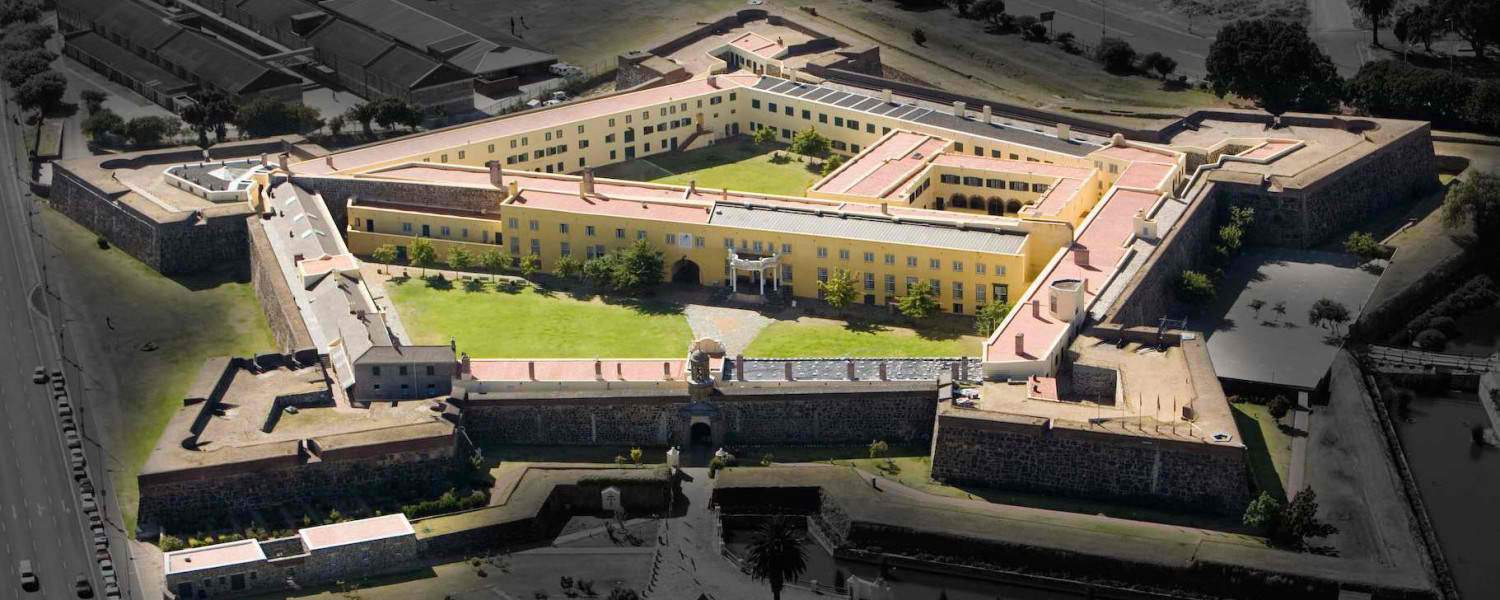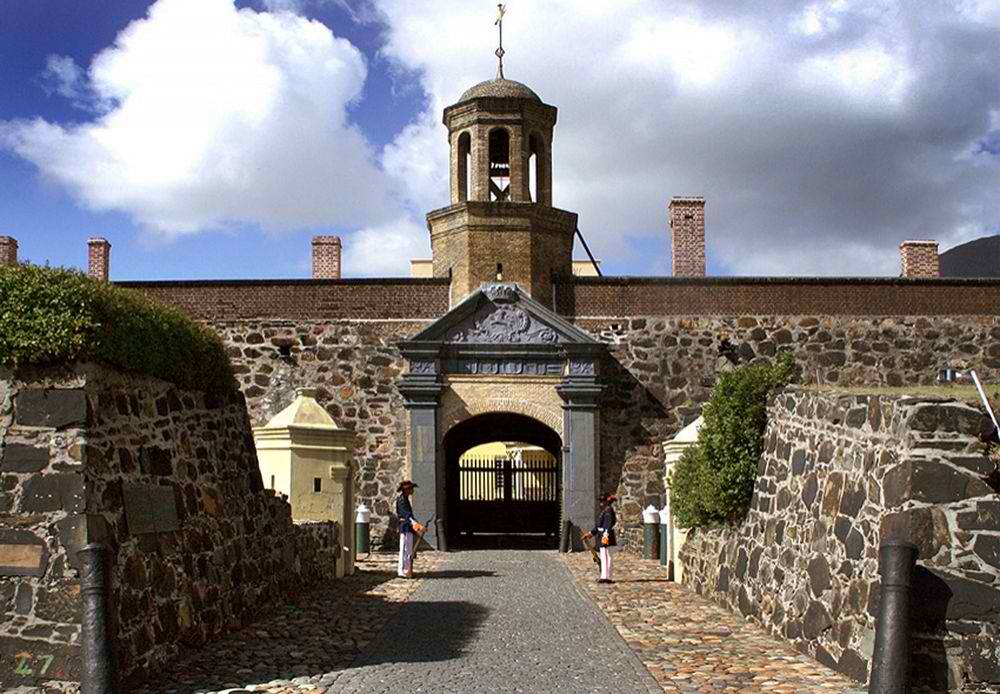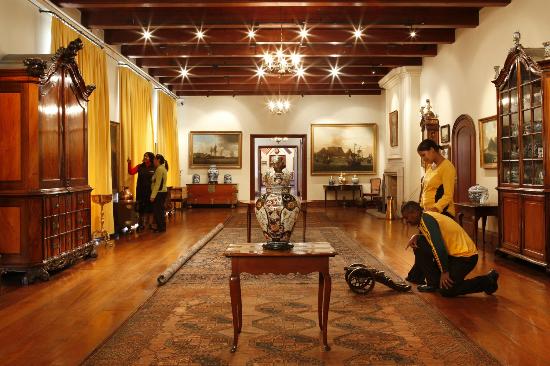The Castle of Good Hope is the oldest surviving colonial building in South Africa. It was built in the 1600s. It is shaped in a pentagon with five bastions and flaunts both elements of Medieval and English Renaissance architecture. Before the land reclamation forced the building inland, it was originally a marker of the Table Bay shoreline. This fortress was once the center of civilian, administrative and military life in the Cape. The Castle of Good Hope arguably represents one of the best preserved 17th century DEIC architecture on the entire globe. The Castle formed part of a formidable defensive system at the Cape that discouraged attacks. It has never been attacked. It is hoped to become South Africa’s next UNESCO World Heritage Site.

The History
In 1664, tensions between Britain and the Netherlands renewed rumors of war. With the fear of a British attack on the Cape, a five-pointed stone Castle similar to other such fortifications in Europe and the East was built. It was planned around a central point with five bulwarks known as bastions.
The site of the Castle was chosen in 1665 by the Commissioner Isbrand Goske who later became the first Governor of the Cape. Pieter Dombaer, as the engineer, was responsible for the construction of the Castle which was built by slaves, burghers, Khoikhoi and company workers.
The foundations of the Castle of Good Hope were dug in 1665 and the cornerstones of the first bastion were laid on the 2nd January 1666, after which building started in all earnest.
The building of the castle was delayed when peace returned to Europe in 1667. The first bastion, Leerdam, was completed on the 5 November 1670. Followed by Buuren, Catzenellenbogen, Nassau, and Oranje. The five bastions were named after the main titles of William III of Orange-Nassau on 26 April 1679. The height of the walls of the bastions on the sea side was 10 meters, and those on the land side were even higher.
In 1679, the Castle was finally completed. It was called a Castle because of its defensive structure and because it comprised a small community or town on its own similar to those castles in Europe. Inside its walls, there were among others, a church, living quarters, bakery, offices, workshops, cells and other facilities.

This castle can be entered through the Main Gateway from the Grand Parade and City Hall side. Between 1682 and 1684, this entrance was built to replace the original entrance which was situated between the Buuren and Catzenellenbogen bastions. The pediment above the entrance bears the crowned lion rampant with the seven arrows of unity in its paw which was the coat-of-arms of the United Netherlands. There are also other two smaller entrances to the Castle. On the architrave below are carved the arms of the Dutch cities in which the United East India Company had chambers, namely, Hoorn, Delft, Amsterdam, Middelburg, Rotterdam, and Enkhuizen. On either side of the entrance are the statues of Mercury, the god of commerce and Neptune with the trident, the sea god.
A bell tower which was built in 1684, was also situated over the main entrance. It was used to announce the time, as well as warning citizens in case of danger. It was also rung to summon residents and soldiers when important announcements needed to be made. The original bell, which was considered the oldest in South Africa, was cast in Amsterdam in 1697 by the East-Frisian bell maker Claude Fremy. It weighs just over 300 kilograms.
There was also a part of the Castle which served as the office of the governor and arguably the first seat of political power in our country known as “De Kat”. From these chambers, the Council of Policy controlled all facets of early colonial life, including where they could live; what they could plant and produce; the prices of their products and many other aspects of their lives in order to ensure order in the settlement.
Historical Monument
In 1936, the Castle was declared a historical monument, the first site in South Africa to be so protected. Extensive restorations were completed during the 1980s making the Castle the best-preserved example of a Dutch East India Company fort.
In 1982, a comprehensive restoration process was started to restore the Castle to its former glory. The process was completed early in 1993. Another exciting restoration and renovation are planned to proceed towards the end of 2014. The Castle represents, in its restored form, Dutch, English and French building styles. In certain parts, the flat roofs favored by the Dutch were rebuilt during restoration. In other sections, the pitched roofs and stone work of the British era can be seen. The original slate roof tiles were replaced with replicas.
Castle of Good Hope Today

Today the Castle houses the Castle Military Museum, the William Fehr Collection, and the ceremonial facilities for the traditional Cape Regiments. The Castle is also the home of the Cape Town Highlanders Regiment, a mechanized infantry unit. These valuable collections have special relevance to the Castle and were bought, on public demand, to be on permanent exhibition in the Castle. Through events, festivals, celebrations, commemorations, concerts, workshops, and exhibitions the Castle of Good Hope is positioning itself for survival over the next 350 years.

